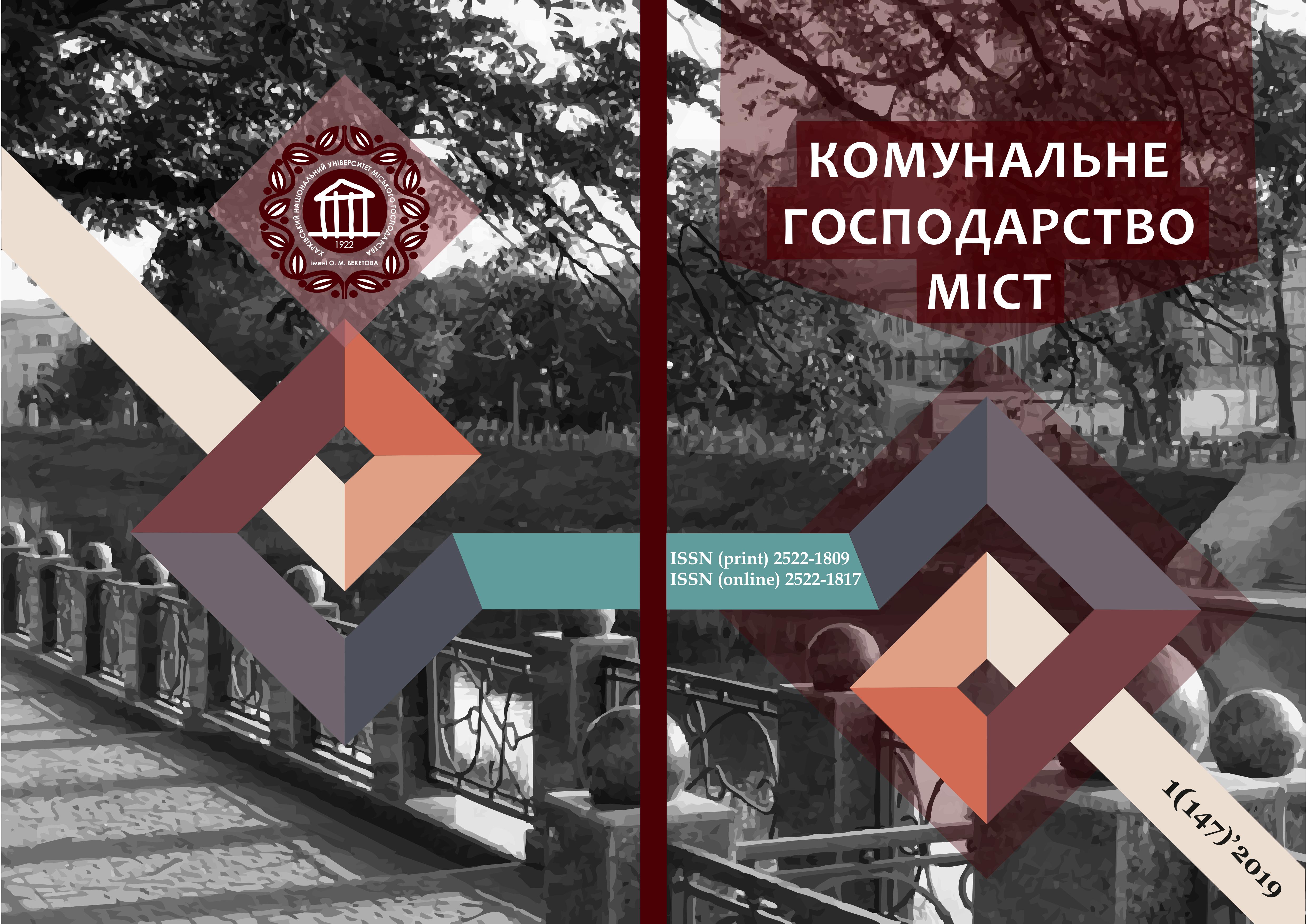RECYCLING CONSTRUCTION WASTE GENERATED IN UKRAINE
Array
Keywords:
construction waste, waste utilisation, environmental impact dynamicsAbstract
The paper presents the dynamics of utilization of construction waste generated in the implementation of construction work in Ukraine. The problem of recycling construction waste is due to significant amounts of construction waste in Ukraine, their annual growth and negative impact on the environment. The experience of European countries regulating their activities using construction waste or disposal is presented. Which due to the improvement of technology and legislation were able to achieve a very high level of recycling construction waste.
The subject of research is the system of waste management in Ukraine, the object is construction waste. The purpose of the work: assessment of the negative impact on the environment in the disposal of waste construction activities. Research objectives: to assess the negative impact on the environment of waste construction activities; to estimate the potential level of reduction of the negative impact on the environment in the application of technologies for the disposal of construction waste. The urgency of the work is determined by significant volumes of building waste construction in Ukraine, their growth and negative impact on the environment. Measures for collecting, storing, temporarily storing, moving (transporting), processing, using, disposing, and disposing of construction waste should reflect complete and reliable information, comply with the current sanitary and environmental requirements, as well as the principles of the most complete utilization of secondary raw materials (wastes).
However, a number of factors have been identified that must be considered when constructing processing plants. When crushing, a significant amount of dust is formed, which is represented by silicates, aluminosilicates and calcium and magnesium hydrosilicates. Calculated and analytical studies of emissions of pollutants during crushing showed that the concentration of dust at a distance of 200-220 m from the source of emission exceeds the MAC. In this regard, the minimum possible size of the C 33 from these sources of emissions of pollutants into the atmosphere is 300 m (in the absence of dust suppression systems). This factor is essential when choosing a site for the location of a remote control, and also limits the possibility of using installations in conditions of dense housing development. Another significant factor is the level of noise exposure created during the operation of the crushing plant.
References
Lyubeshkina, E.G. (2001) Municipal solid waste. Problems and solutions. Food industry, 312, 28–30.
Reimann Dieter. O. (1991) Multifuktionale, zukunftsorien-tiertr Rauchgasrei nigungstechniken. Brennst–Warme–Kraft, 43, 3, E61–E64.
Official web-site (n.d.) Retrieved from http://www.wasterecycling.ru/archive_journal/mai_2006_2/stroitelnye_othody.jdx.
Alkov, N.G., Koroteev, A.S. (2000) Complex technology of multi-stage disposal of solid household waste with the produc-tion of electricity. News of the Academy of Sciences. Power engineering, 4, 21–29.
Morkovskaya, N.G., Zolotova, N.M. (2013) Factors affect-ing the choice of the type and method of demolition of buildings and structures. Municipal economy of cities. Retrieved from http://khg.kname.edu.ua/index.php/khg/article/view/285/283
Morkovskaya, N.G. (2018) The first processing of the bud-dies is based on the method of their living. Municipal economy of cities. Retrieved from http://khg.kname.edu.ua/index.php/khg/article/view/5213/5157
Avralin, K.P. (2005) Business Capital. “Kyivmiskbud” will earn on garbage: Newspaper – K .: izdat. Kiev, 8–10.
Construction waste: recycling (n.d.)
Erukhimov, A.L. (1999) Building materials. Prospect of the use of construction waste: Magazine, 12 – М .: izdat. Group Press, 23 –28.
Morkovskaya, N.G., Shapoval, S.V., Sklyarov, M.V. (n.d.) Ekologicheskaya reconstruction of the mіst and repeat the re-view of buddies.
Boravskaya, T.V. (2011) European experience in the treat-ment of waste production and consumption. - M.: Izd-vo Chamber of Commerce and Industry, 212.
Handbook of best available waste management technolo-gies. Ch. 1-2 (2011) - M .: Publishing house Business media, 315.
Official web-site (n.d.) Retrieved from http://khg.kname.edu.ua/index.php/khg/article/view/281/279
Downloads
Published
How to Cite
Issue
Section
License
The authors who publish in this collection agree with the following terms:
• The authors reserve the right to authorship of their work and give the magazine the right to first publish this work under the terms of license CC BY-NC-ND 4.0 (with the Designation of Authorship - Non-Commercial - Without Derivatives 4.0 International), which allows others to freely distribute the published work with a mandatory reference to the authors of the original work and the first publication of the work in this magazine.
• Authors have the right to make independent extra-exclusive work agreements in the form in which they were published by this magazine (for example, posting work in an electronic repository of an institution or publishing as part of a monograph), provided that the link to the first publication of the work in this journal is maintained. .
• Journal policy allows and encourages the publication of manuscripts on the Internet (for example, in institutions' repositories or on personal websites), both before the publication of this manuscript and during its editorial work, as it contributes to the emergence of productive scientific discussion and positively affects the efficiency and dynamics of the citation of the published work (see The Effect of Open Access).

